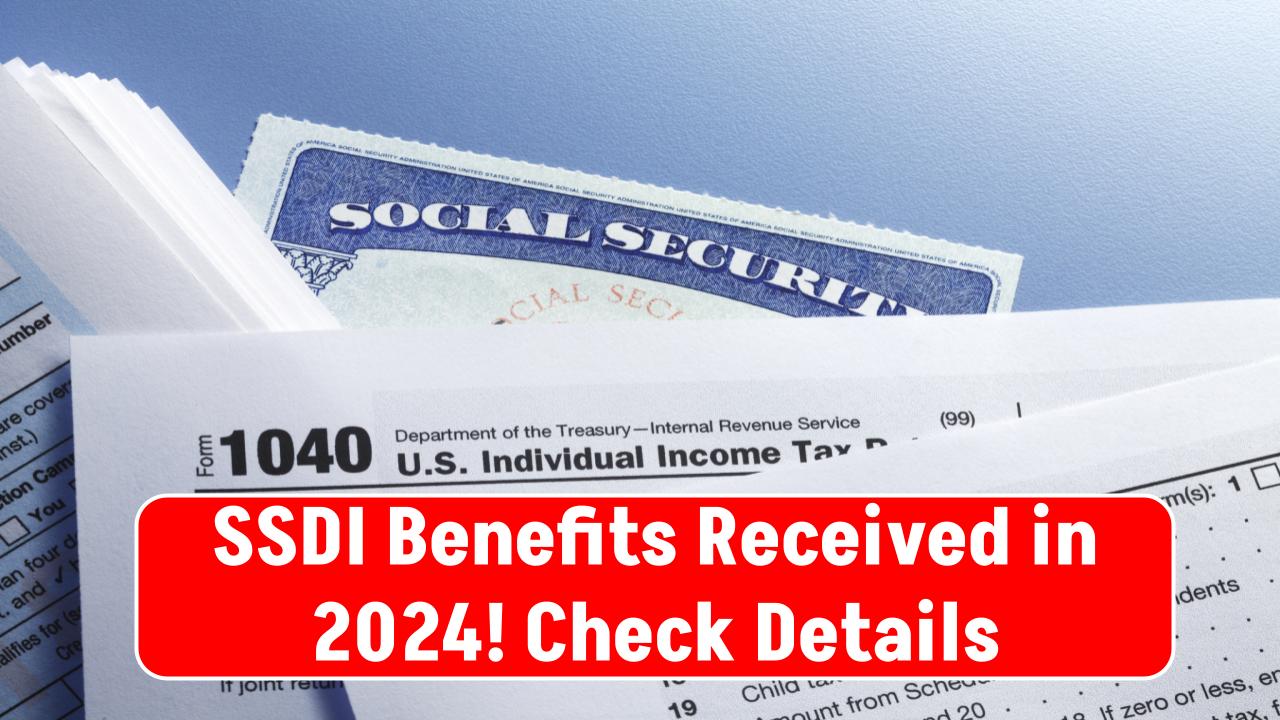
Social Security Disability Insurance (SSDI) benefits provide crucial financial support for millions of Americans. However, many recipients are unaware that their SSDI benefits may be subject to federal income tax. In 2024, whether your SSDI benefits are taxed depends on your total income and filing status. This article breaks down the tax rules, provides real-world examples, and offers expert guidance to help you understand how SSDI taxation works.
SSDI Benefits Received
| Topic | Details | |
|---|---|---|
| Taxability of SSDI | Depends on combined income and filing status. | |
| Base Amounts | Single: $25,000 | Married Filing Jointly: $32,000 |
| Taxation Thresholds | Up to 50% taxable (middle range), up to 85% taxable (higher range). | |
| Example | Single filer with $20,000 SSDI & $10,000 other income = No tax. | |
| State Tax Considerations | Some states tax SSDI benefits; check your state laws. | |
| IRS Guidelines | Official IRS Guide |
Understanding SSDI taxation in 2024 is crucial to avoid surprises during tax season. Whether your SSDI benefits are taxable depends on your total income and filing status. Use the Combined Income formula, check IRS thresholds, and explore tax-saving strategies to minimize liability.
Also Check: $1375 Social Security Checks Monthly – How to Claim it? Eligibility Criteria
SSDI Benefits Received: Understanding SSDI and Taxes
SSDI benefits are not automatically taxable. However, if your total income exceeds a certain threshold, a portion of your benefits could be subject to federal taxes. The IRS considers a combination of your SSDI benefits and other income to determine taxability.
How to Calculate Your Taxable SSDI Income
The IRS uses Combined Income to assess SSDI taxability:
Formula:
- SSDI Benefits = The amount you receive annually from Social Security Disability.
- Other Income = Wages, pensions, interest, dividends, rental income, and tax-exempt interest.
SSDI Benefits Received: Base Income Amounts by Filing Status
Your Combined Income is compared to the following base amounts:
| Filing Status | Base Amount |
| Single, Head of Household, or Qualifying Widow(er) | $25,000 |
| Married Filing Jointly | $32,000 |
| Married Filing Separately (lived apart all year) | $25,000 |
| Married Filing Separately (lived with spouse at any time) | $0 |
If your Combined Income is below these thresholds, your SSDI benefits are not taxable.
SSDI Benefits Received: SSDI Taxation Thresholds
- If your Combined Income is between the base amount and upper limit, up to 50% of your SSDI benefits may be taxable.
- If your Combined Income exceeds the upper threshold, up to 85% of your SSDI benefits may be taxable.
| Filing Status | 50% Taxable Threshold | 85% Taxable Threshold |
| Single, Head of Household, or Qualifying Widow(er) | $25,000 – $34,000 | Over $34,000 |
| Married Filing Jointly | $32,000 – $44,000 | Over $44,000 |
| Married Filing Separately (lived apart all year) | $25,000 – $34,000 | Over $34,000 |
Also Check: $3,900 CRA Pension Payment in 2025 – Who’s Eligible & When Is It Coming?
SSDI Benefits Received: Example Calculation
Let’s assume Alex is a single filer with:
- $20,000 in SSDI benefits
- $10,000 in additional income from a part-time job
Step 1: Calculate Combined Income
Step 2: Compare to Threshold
- Alex’s Combined Income ($20,000) is below the $25,000 threshold.
- Result: Alex’s SSDI benefits are NOT taxable.
SSDI Benefits Received: State Tax Considerations
While the federal government taxes SSDI based on the above rules, states have different policies.
- Some states tax SSDI fully or partially.
- Many states do NOT tax SSDI at all.
Check your state’s tax department website or consult an expert to see if your SSDI benefits are subject to state taxes.
How to Minimize SSDI Taxes
If you expect to owe taxes on your SSDI benefits, here are some strategies to reduce tax liability:
1. Reduce Your Taxable Income
- Contribute to a Traditional IRA or 401(k) to lower taxable income.
- Use a Health Savings Account (HSA) for medical expenses tax-free.
2. Spread Out Retirement Withdrawals
- If you receive SSDI along with retirement income, withdraw smaller amounts to stay below tax thresholds.
3. Consider Filing Separately
- If you’re married, filing separately could reduce your taxable SSDI income—but only if you lived apart all year.
Also Check: $1375 Social Security Checks Monthly – How to Claim it? Eligibility Criteria
SSDI Benefits Received (FAQs)
Do all SSDI recipients have to pay taxes?
No. Most SSDI recipients do NOT owe taxes because their total income falls below the taxation threshold.
How can I check if my SSDI is taxable?
Use the Combined Income formula: Compare your total to the IRS base amounts.
Can SSDI recipients get tax refunds?
Yes! If you had taxes withheld or qualify for credits (like the Earned Income Tax Credit), you might receive a refund.
Should I have taxes withheld from my SSDI?
If your income is high enough to owe taxes, you can request withholding using Form W-4V to avoid a tax bill at the end of the year.
Are there tax deductions for disabled individuals?
Yes! The Disability Tax Creadit (DTC) and Medical Expense Deductions can help reduce taxable income.








































